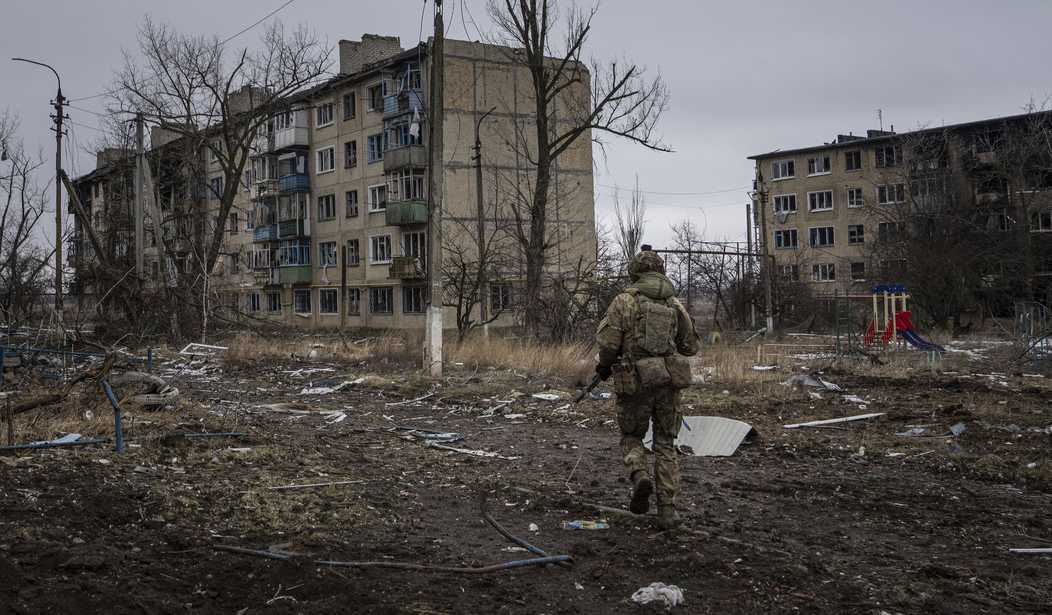If you follow the Ukraine war news with more than a passing interest, you’ll be struck by the lack of news about casualties from either side. From the U.S. standpoint, there is also little news about the progress — or lack thereof — of Ukraine’s “counteroffensive.”
What little news that has leaked out does not bode well for Ukraine. The allies vastly underestimated Russian defenses. The massive minefields and anti-tank measures that Russia built have forced Ukraine to drastically alter their tactics from head-on armored assaults in which they have apparently lost a significant number of tanks and Bradley fighting vehicles to small unit engagements that include sappers to clear the minefields.
Nevertheless, the casualties are mounting quickly for both sides. The difference is that most of Russia’s front-line troops are cannon fodder — conscripts with very little training and convicts. On the other hand, Ukraine doesn’t have the luxury of sacrificing its men in a war of attrition that heavily favors the Russians.
How many men has Ukraine lost in its counteroffensive? The early victories in Kherson and beating back Russian troops from the outskirts of Kyiv are a distant memory. And as the war becomes a hard, slogging, bloody mess, the will to fight and win is sapped from Ukraine.
There have been no victories—not even bloody and debilitating wins like in the Fourth Battle of Karkhov—for nearly a year. Western leaders still profess that their support will continue. Yet the Western Alliance now admits it didn’t give Ukrainians nearly enough good stuff for even modest tactical gains in their ongoing, sacrificial offensive—and knew it going in. And increasingly, Ukrainian unit-level commanders are accusing higher leaders of simply using them as cannon-fodder to satisfy NATO overlords. Not just platoons, but larger units are surrendering to Russian forces. Morale is cratering.
This is attrition coming to fruition. The fallen empires of 1918—Germany, Austria-Hungary, Russia, and the Ottomans—needed four years to reach that point. In a third of that time, Ukraine has lost 2.5 percent of its population. This reckoning amounts to what Soviet historians called “irreplaceable losses”—meaning, all soldiers who would never, ever return to the ranks.
If you look at “comparative artillery delivery” — a metric created in World War I where the vast majority of casualties were inflicted by artillery — you find the Russians with a 10-1 advantage. Simply by counting Ukrainian obituaries or dead SIM cards, a grim picture emerges of Ukraine’s worsening situation.
In addition, the Russians are slowly dealing with their morale problem. The excellent defenses — named the “Surovikin Line” after the general who designed them — have forced the Ukrainian army to pay for each yard in blood and treasure. The depth of the defenses — one to three miles — is very discouraging to an attacking force who knows as hard as it fought to get through a defensive position, it would have to repeat the effort to get through the next one.
After 500 days, the Russian army appears to be finally getting its act together.
[A]rmy-wide confidence stemming from resilience in failure, successful adaptation under fire, and rapidly evolving operational art; a string of success along the front and a surge in strategic momentum; a feeling across the nation that Russia has the men, the tools, and the hard-won battlefield skill to finish the job; and the very sight of Ukraine’s last, NATO-built army burning before their very eyes. What adds up for Russia subtracts from Ukraine.
Ukraine’s demographics are also working against it when considering a war of attrition.
Ukraine in 1994 was 52 million strong. Then disaster set in: First, the best and brightest youth sought opportunity in the European Union and Russia. Then the terror after 2014 accelerated the outflow. Ukraine was a nation of perhaps 33 million in early 2022. Today, a quarter of that already-diminished country’s population has fled to the European Union, and another quarter is in the now-Russian oblasts or residing as new migrants in the Russian Federation itself. Ukraine, at 20 million, ranks somewhat bigger than the Netherlands, and somewhat smaller than Taiwan.
It doesn’t look like Russia has the muscle to achieve all of its original war aims. Now that Ukraine is armed with top-of-the-line weapons, unless Putin is hell-bent on toppling the Kyiv government, he will be forced to negotiate. Common sense says Ukraine will realize the stalemate before the end of summer and join Putin at the negotiating table.
Unfortunately, common sense has not been evident in this conflict.









